

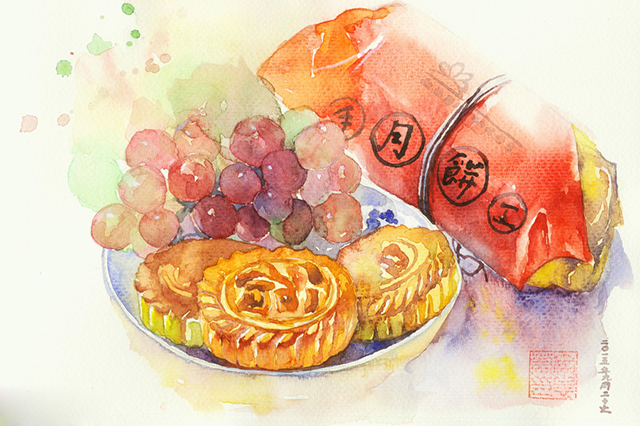 |
[Photo/VCG] |
Mid-Autumn Festival, also called the Moon Festival, is held on the 15th day of the eighth month in the Chinese lunar calendar—essentially the night of a full moon. To the Chinese, a full moon is a symbol of prosperity, happiness, and family reunion.
Mooncakes, known as the festival’s must-eat food, enhance the festive atmosphere. According to Dao Xiang Cun, one of the most prestigious, time-honored Chinese bakeries, more than 100 millions of its mooncakes have been sold this year. Similarly, at a ‘shopping festival’ currently being held in Shanghai, daily sales reach 47,000 pieces for only one type of mooncake in some local stores.
China’s passion for mooncakes is never dampened. While embodying the attention and appreciation of festive tradition, it more or less gives a sense of simplification to forms for celebration.
However, with diversified regional traditions in China, the festive food is much more than a mooncake; the festive activities are much more than buying mooncakes. Various delicacies and activities have been well prepared and presented to meet the demand of both the palate and the eye, as well as to mark a unique custom of the region.
Let’s have a look at some of the festival’s typical customs and food.
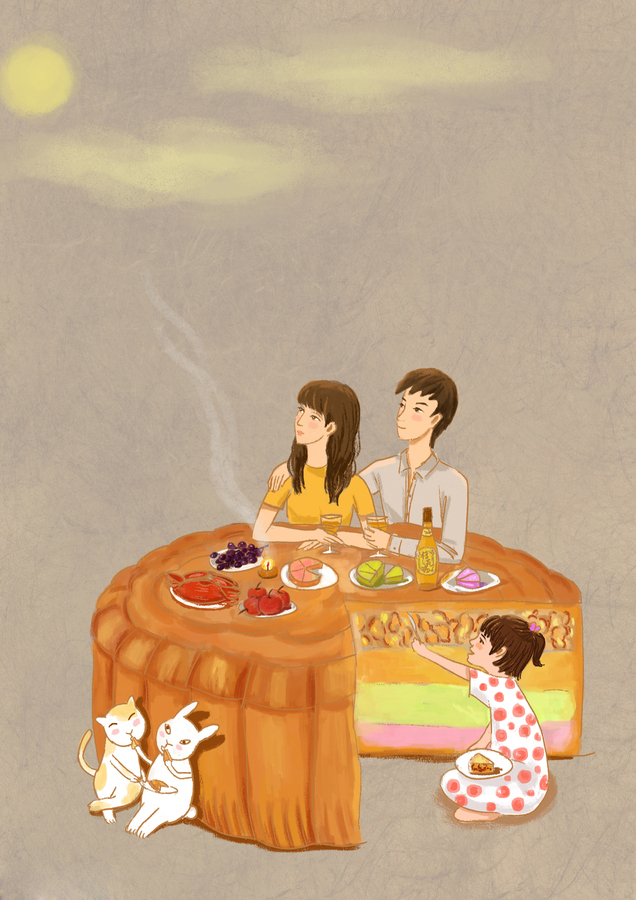 |
In this fanciful illustration, a family enjoys a Mid-Autumn Festival feast on a mooncake table. [Photo/VCG] |
Appreciation and Worship of the moon
As a time of family reunion, the Moon Festival is also known as the Reunion Festival. People usually celebrate the festival at night. The most important activity is to appreciate the bright full moon. It is highly recommended that you find the best place with a great view of the moon, such as a roof, a balcony, a mountaintop or a lakeside.
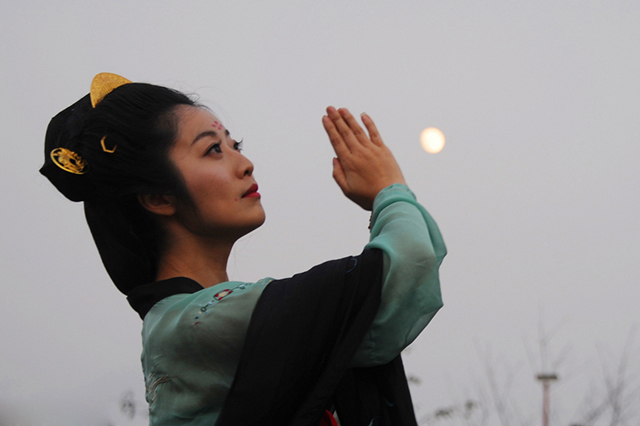 |
A woman wearing hanfu, Chinese traditional clothes in the style of the Tang Dynasty, worships the moon. [Photo provided to China Daily] |
People in some old towns will hold a ceremony to worship the moon in a square, park, or street. But nowadays this tradition has a lot to do with the tourist business.
Fruit to honor the moon includes watermelon, grapefruit, pomegranate, pear, persimmon, grapes, or other seasonal produce.
Lanterns
A notable part of the holiday celebration involves carrying brightly lit lanterns, lighting lanterns on towers or launching floating sky lanterns called Kongming, which can float because the burning candles heat the air in the lantern.
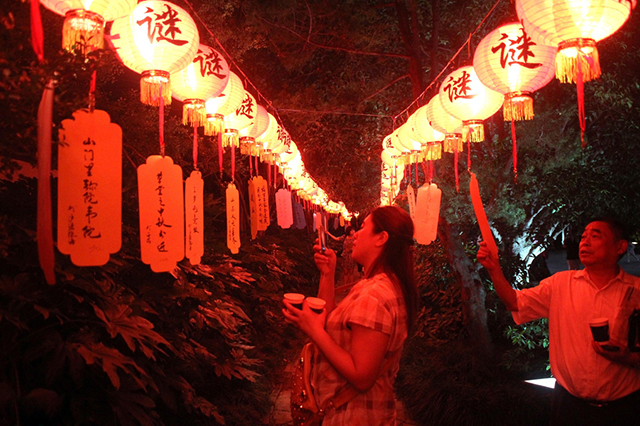 |
People participate in the lantern game. [Photo provided to China Daily.] |
People write good wishes on the lanterns and let them fly up into the sky. Another tradition involving lanterns is to write riddles on them and have other people try to guess the answers.
The annual tide – watch
In Zhejiang Province, watching the flood tide of the Qiantang River during the festival is a must for locals, as well as tourists. When the surging tide comes in, the water can rise up to a height of 30 feet and the noise it generates sounds like thunder, or thousands of horses running. In terms of its history, the custom of watching the tidal bore is more than 2,000 years old.
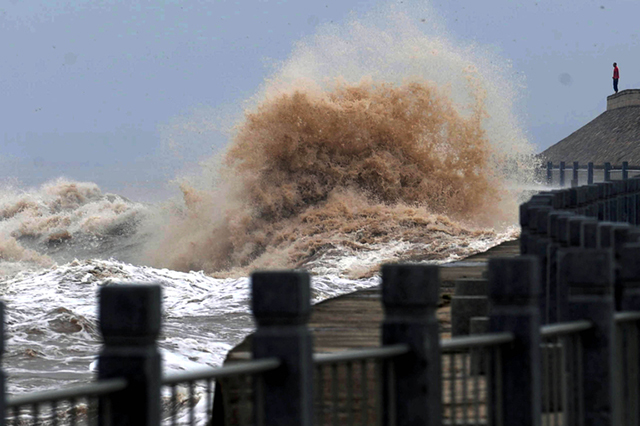 |
Huge waves pound against a pier on the Qiantang River. [Photo provided to China Daily] |
The rushing tide can be dangerous if you are careless. So it's best to listen to the advice of local police, whose job is to ensure your safety and security.
Tuan Yuan Mo: Decorated steamed bread
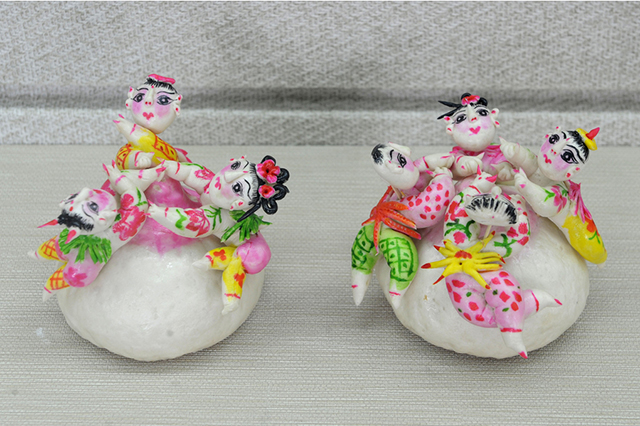 |
Tuan Yuan Mo, or decorated steamed bread, is a favorite in Shanxi Province. [Photo provided to China Daily] |
In northern China, some families will make a specialty called “Tuan Yuan Mo”, which means, “steamed bread of reunion”. The middle part of the bread is usually molded in a big bowl and decorated with various patterns and figures, such as flowers or children.
Ci Ba: glutinous rice cakes
 |
One type of Ci Ba is made with meat inside. [Photo provided to China Daily]
|
Ci Ba are typical Chinese glutinous rice cakes. The tradition of eating Ci Ba at Mid-Autumn Festival dates back to about 2,000 years ago in Southern China. The words mean ‘the unity of one family’. In different regions of China, Ci Ba is shaped and stuffed with different fillings.
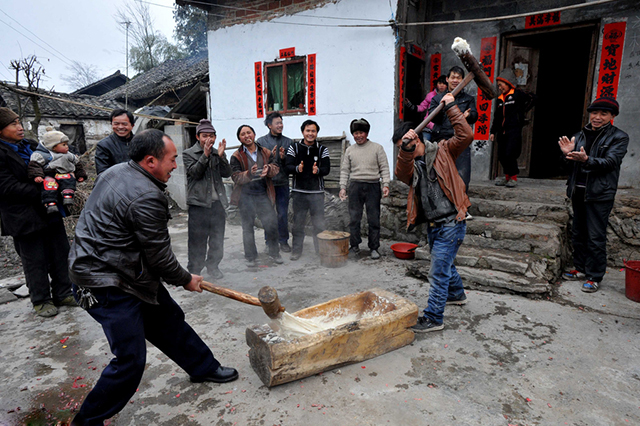 |
People watch as two men ‘beat’ rice into Ci Ba dough. [Photo provided to China Daily] |
When rice is steamed, people come to beat it into a dough. All members of the family beat it with their utmost effort and of course, their best wishes. Finally the dough will be shaped and flavored.
Taro
 |
This steamed taro is ready to eat. [Photo provided to China Daily] |
The tradition of eating Taro during Mid-Autumn Festival started in the Qing Dynasty (1636-1912). In Jiangsu and Zhejiang provinces, the term "taro" has the same pronunciation in Chinese as "luck inside." Eating taro during the festival is believed to dispel any misfortune and bring good luck and wealth. Usually, people who live in Kwangtung, the southeast region of China, make a rich cake with taro.
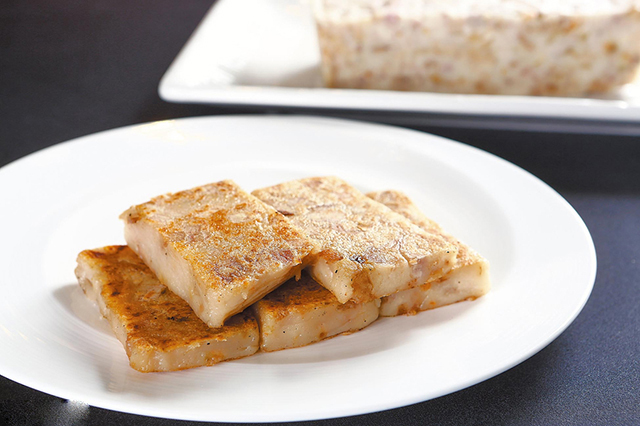 |
Taro cake is a Mid-Autumn Festival favorite. [Photo provided to China Daily] |
Editor: Shen Yiming
Hong Yan contributed to the story
© China Daily Information Co